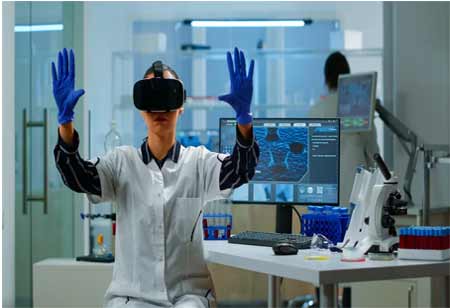Thank you for Subscribing to Healthcare Business Review Weekly Brief
Be first to read the latest tech news, Industry Leader's Insights, and CIO interviews of medium and large enterprises exclusively from Healthcare Business Review
Key Trends Shaping the Medical Device Industry
The medical device industry has always been a vital part of healthcare, enabling doctors and clinicians to diagnose, monitor, and treat patients with greater precision.

By
Healthcare Business Review | Friday, March 28, 2025
Stay ahead of the industry with exclusive feature stories on the top companies, expert insights and the latest news delivered straight to your inbox. Subscribe today.
The medical device industry is evolving rapidly, with technological innovations, regulatory changes, and a focus on patient-centric care leading the way.
Fremont, CA: The medical device industry has always been a vital part of healthcare, enabling doctors and clinicians to diagnose, monitor, and treat patients with greater precision. The sector is experiencing a significant transformation driven by new technologies, changing patient needs, and evolving regulatory environments. As the industry embraces these changes, medical devices are becoming more connected, personalized, and smarter, improving patient outcomes while offering more efficient solutions for healthcare providers.
Rise of Digital Health and Connected Devices
The medical device sector is undergoing a notable transformation towards digital health technologies. Wearable devices can now track heart rate and blood sugar levels, while implantable devices transmit real-time data to healthcare providers. This integration improves patient care by enabling healthcare workers to monitor patients from a distance and take action when necessary, decreasing face-to-face consultations.
wearables and remote monitoring systems are transforming chronic disease management, allowing patients to monitor their conditions in real-time, improving self-management, and reducing complications.
Artificial Intelligence and Machine Learning Integration
Artificial Intelligence (AI) and Machine Learning (ML) are revolutionizing medical device development, improving diagnostics, treatment planning, and device performance. AI-powered algorithms can analyze medical imaging faster and more accurately than human radiologists, identifying conditions like tumors or fractures early. ML can precisely guide robotic surgery based on real-time data and predict patient outcomes based on historical data. As these technologies evolve, they can transform device design and clinical decision-making, improving patient safety and care quality.
Focus on Patient-Centric Design
The focus is on designing medical devices with the patient in mind, aiming to make them easier to use, comfortable, and tailored to individual needs. This includes reducing discomfort in diagnostic tools and integrating wearables with a patient's lifestyle. For instance, insulin pumps and continuous glucose monitors are being redesigned to be discreet and user-friendly, allowing patients to manage their conditions without feeling stigmatized. This patient-centered approach promotes improved adherence to treatment protocols, enhances user experience, and improves health outcomes.
Sustainability and Eco-Friendly Devices
The medical device industry increasingly focuses on sustainability as the world becomes more environmentally conscious. Manufacturers are reevaluating single-use plastics and packaging, seeking eco-friendly alternatives. This includes creating reusable devices, reducing single-use products, and adopting recyclable or biodegradable materials. Reducing energy use and carbon footprints are examples of sustainable manufacturing techniques increasingly important for businesses looking to meet global sustainability targets. In the medical device sector, this tendency is becoming increasingly popular.






